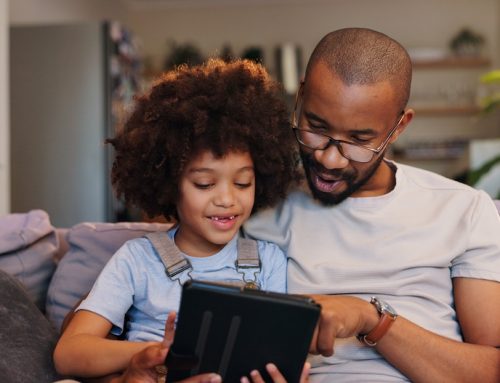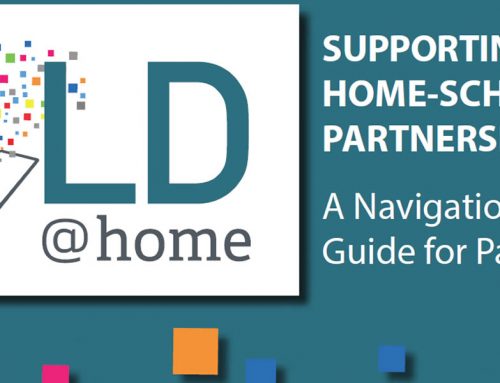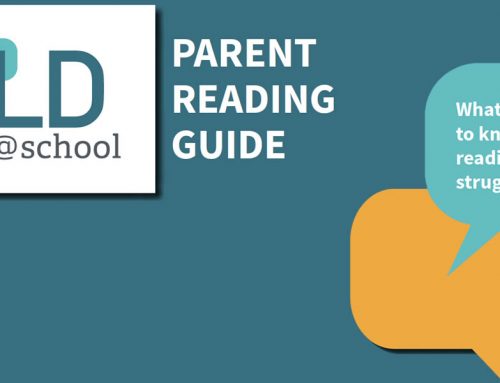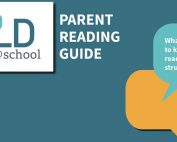by Julia Osborne, Special Education Resource Teacher, York Region DSB
“When you are on the very long journey that is life, always keep in mind your aspirations because they are your destination.”
My journey with student self-advocacy began on rocky terrain; it was a new concept for me, and one of the key missing pieces for my students. Throughout my years of teaching, I listened to my students get upset when a teacher was asking something of them that felt impossible. I realized that, too often, I was having the difficult conversations with teachers about my student’s needs, when I should have been empowering my students to speak for themselves, and to communicate their needs.
At first, I had no idea where to begin. After creating a video of my students speaking out about what they needed in order to succeed in the classroom, I realized that I needed to create something that would help students capture everything they knew about themselves and their needs on paper. It was evident that students had some good ideas about what they needed as learners and how we as teachers could support them; but they had no idea what to do with this information, let alone how to share it.
I introduced student self-advocacy cards as a means for students to communicate their needs as learners and also to support their communications with teachers. The goal was to create something meaningful and useful for both students and teachers. I learned many lessons along the way as I began introducing the cards; for example, at first, I approached self-advocacy with the idea that my lesson about how to create the cards would be the same for every student, but I very quickly learned that each student required a different starting point based on their individual needs. Once the cards were created, I learned that teaching students HOW to use their cards was as critical to their success as creating the cards. Teaching students how to use their advocacy cards is a process of continuous growth for me, as each year brings new learners and a new set of challenges to help them understand how they can best use their advocacy cards to support their success.
The pay-off has been incredible, both for students and for teachers. Seeing my students grow from role-playing advocacy conversations in our classroom, to watching their interactions with teachers, has been an honour. By the end of the school year I found that, often, these conversations no longer required the physical presence of an advocacy card; just the information on them, because students were now able to independently speak to their needs. I also noticed that these conversations became less frequent, as teachers anticipated their students’ needs and began making the accommodation available without the students having to ask. This progress, when teachers began anticipating the students’ needs, made my students realize that their needs mattered and that self-advocacy could really work!
In my experience, the use of self-advocacy cards helped teachers provide accommodations and implement strategies that allowed students to focus on what they are good at. In other words, self-advocacy cards helped make practical my philosophy that we need to, ‘Focus on what students CAN do, not what they CAN’T!‘
Now, a year later, the positive outcomes of using student self-advocacy cards are obvious: students are empowered to find their voice and to realize their needs are important. Self-advocacy focuses students’ efforts in learning more about themselves and their needs. It bridges the gap between student and teacher to allow students to communicate what they need. It increases students’ confidence and self-esteem because they are more aware of their strengths and they have been given the tools they need to be successful.
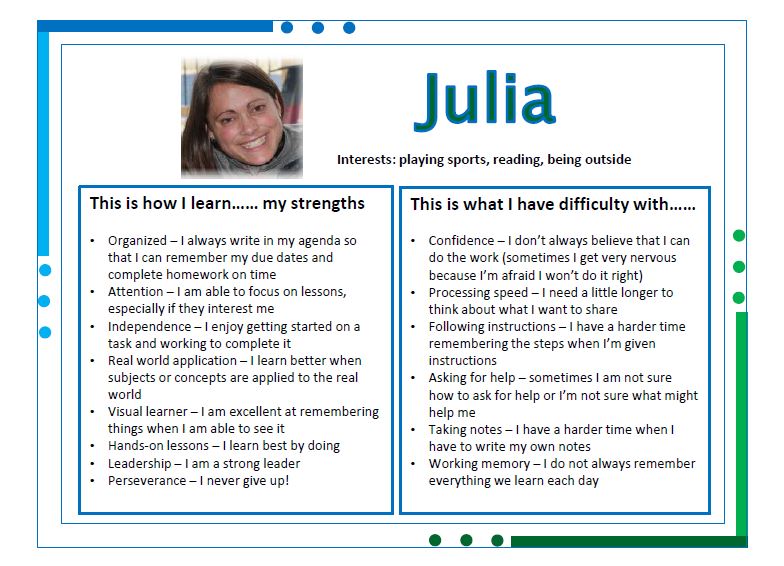
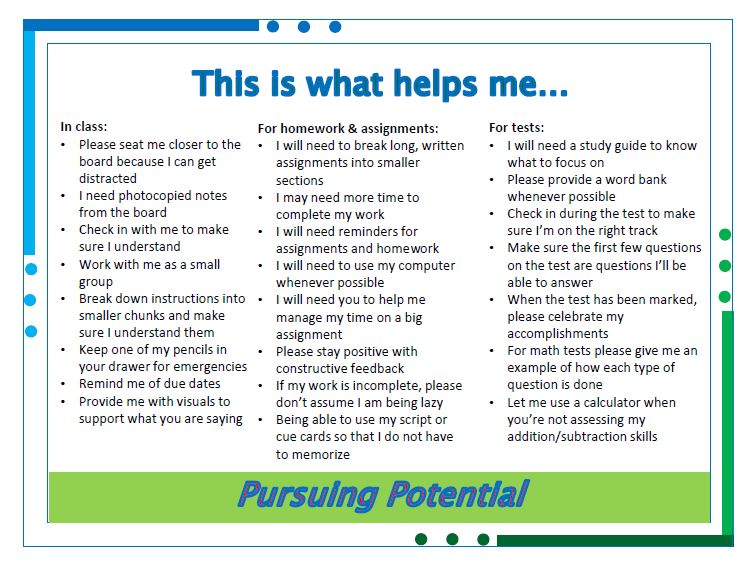
Images: An example of a self-advocacy card created by Julia.
Click here to access a PDF example of Julia’s self-advocacy cards.
Message to parents:
Although this was a strategy initially designed to be used solely within the school environment, this is a great activity that you as a parent can do with your child. The benefits of this approach is that your child will begin to understand themselves as a learner and it will push them to find their voice. Although parents are essential in the advocacy journey of a child, it is also crucial that students begin to learn how to advocate for their own needs. By supporting your child in their growth and self-advocacy, you will help your child to develop into a strong, confident young man or woman who will gain perspective about everything they can accomplish!
Julia Osborne, Lead Special Education Resource Teacher at Greensborough Public School, has worked for 13 years with YRDSB and for 7 years as a SERT. She continues to move ahead in improving the teaching of self-advocacy in order to empower her students to find their voices. Many students board-wide are benefiting from her work in advocacy and she continues to work hard to ensure that all students be given this opportunity to find their voice. It is her lifelong mission to be a front-runner in the constant pursuit to change the stigma around learning disabilities.


